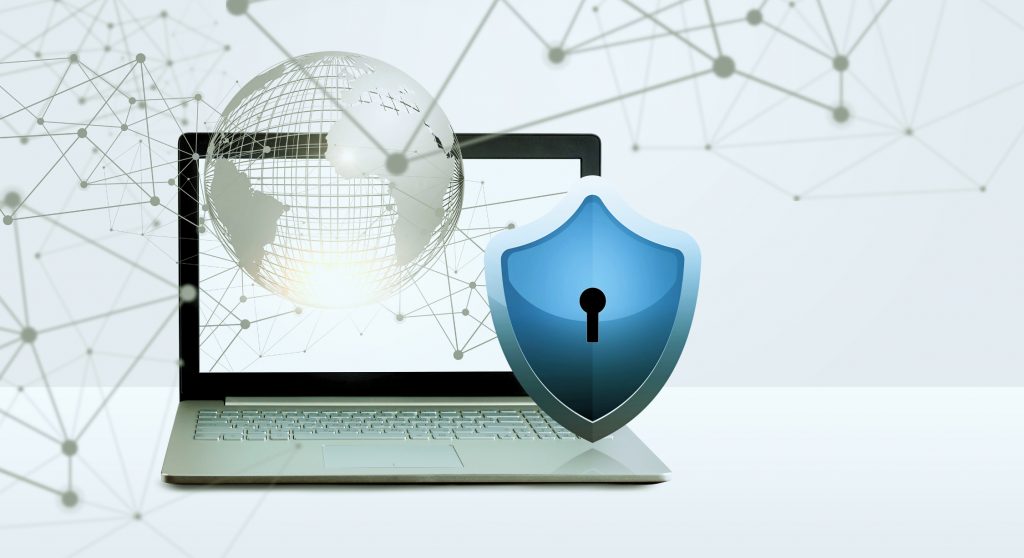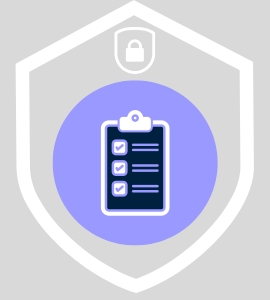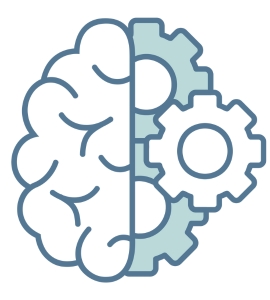Experion Technologies crafts robust software solutions that prioritize security from the ground up, making technology breakthroughs while safeguarding your digital assets. Yes, implementing strong security measures is no longer just a good practice – it’s an absolute necessity. Think of the massive Equifax breach that exposed sensitive data of over 147 million people or the WannaCry ransomware attack that crippled systems worldwide, costing billions in damages. These incidents serve as reminders that a single vulnerability can have catastrophic effects on individuals, businesses, and entire industries. Protecting data and maintaining trust requires proactive steps to stay ahead of potential risks. The consequences of insecure software can be far-reaching, impacting individuals, businesses, and entire industries. The risks associated with vulnerable software include data breaches, financial losses, legal liabilities, and reputational damage. Implementing strong security measures is essential to mitigate these threats effectively. Combining software development and security ensures that applications are designed with built-in protection, reducing risks without compromising functionality or performance.
Objective:
This guide aims to provide readers with actionable insights and practical recommendations for secure software development:
- Offer actionable insights for secure software development.
- Highlight strategies for addressing vulnerabilities and secure coding.
- Recommend tools and frameworks to strengthen application protection.
- Promote a security-conscious approach within development teams.
- Focus on staying informed about emerging cyber threats.
Understanding Secure Software Development

Integrating security in software development involves applying protective strategies and testing at each stage to minimize vulnerabilities. Secure software development is a process that ensures software is designed, developed, and maintained with security as a top priority. It involves implementing measures to protect the software from vulnerabilities that malicious actors could exploit. Given the increasing sophistication of cyber threats, the importance of secure software development is more critical than ever. Adopting secure practices helps organizations minimize the risk of data breaches, financial losses, and reputational damage.
Key Components
By incorporating the following components into their development processes, organizations can create software that is more resilient to attacks and better protects sensitive information. Experion’s expertise in DevSecOps and secure coding practices ensures that Experion’s software solutions meet the highest security standards without compromising on performance or innovation.
- Risk Management
This involves identifying, assessing, and mitigating potential security risks throughout the software development lifecycle. It includes activities such as threat modeling, vulnerability analysis, and risk assessment.
- Security Testing
Identifying and evaluating security vulnerabilities in software involves using various testing techniques such as penetration testing, vulnerability scanning, and code analysis. These methods help uncover potential weaknesses in the application, enabling developers to address and fix them before they can be exploited.
- Compliance with Standards
Adhering to established security standards and frameworks ensures that software meets industry best practices. One widely recognized standard is the NIST SSDF (Secure Software Development Framework), which provides a comprehensive set of guidelines for secure software development.
The Imperative of Robust Security Requirements

In the ever-evolving landscape of digital warfare, where cyber threats lurk around every corner, the cornerstone of secure software development lies in the meticulous crafting of ironclad security requirements. These requirements, akin to the fortified walls of a medieval castle, must be designed to withstand the relentless onslaught of modern-day digital marauders.
Internal Policies: The Blueprint for a Secure Citadel
Organizations must establish a robust framework of internal policies that serve as the blueprint for a secure digital citadel. These policies should encompass a wide range of security measures, including:
- Access Controls: Implementing stringent access controls ensures that only authorized individuals have access to sensitive data systems and credentials.
- Incident Response Procedures: A well-defined incident response plan outlines the steps to be taken in the event of a security breach, minimizing damage and swiftly restoring operations.
- Data Protection Measures: Robust data protection measures, such as encryption and data masking, safeguard sensitive information from unauthorized access.
Risk Management Strategies: A Proactive Defense
Proactive risk management is crucial for identifying and neutralizing potential vulnerabilities before they can be exploited. By anticipating risks and addressing them early in the software development process, organizations can prevent security issues from escalating and ensure a stronger security posture.
- Threat Modeling: Involves pinpointing potential threats and vulnerabilities to evaluate their impact on a system.
- Vulnerability Analysis: Regularly scanning for and addressing vulnerabilities in software and infrastructure.
- Risk Assessment: Evaluating the likelihood and severity of potential risks to prioritize mitigation efforts.
Compliance Mandates: Navigating the Regulatory Maze
In today’s highly regulated environment, organizations must navigate a complex maze of compliance mandates. Adherence to these regulations is not only a legal requirement but also a critical aspect of ensuring data security.
- GDPR: The General Data Protection Regulation imposes strict data protection requirements on organizations operating within the European Union.
- HIPAA: The Health Insurance Portability and Accountability Act sets forth specific security standards for healthcare organizations handling protected health information.
- PCI DSS: The Payment Card Industry Data Security Standard mandates security requirements for organizations that handle cardholder data.
Training and Tools: Empowering the Digital Defenders
A well-trained and equipped workforce is essential for defending against cyber threats. Organizations should invest in:
- Role-Specific Training: Tailored training programs ensure that individuals have the skills and knowledge to perform their security-related duties effectively.
- Security Tools: Advanced security tools, such as vulnerability scanners, intrusion detection systems, and code analysis tools, provide the necessary arsenal to combat cyber threats.
Best Practices for Secure Software Development

By conducting regular audits and reviews, organizations can identify and address vulnerabilities early in the development lifecycle, reducing the risk of security breaches.
Secure Coding Guidelines
Adhering to secure coding guidelines is a fundamental aspect of developing secure software. Standards like OWASP (Open Web Application Security Project) and NIST (National Institute of Standards and Technology) provide comprehensive lists of best practices for writing secure code. These guidelines cover a wide range of vulnerabilities, including:
- Injection Attacks: Preventing the injection of malicious code into applications.
- Cross-Site Scripting (XSS): Protecting against the injection of malicious scripts into web pages.
- Cross-Site Request Forgery (CSRF): Preventing unauthorized actions on behalf of authenticated users.
- Insecure Direct Object References: Ensuring that direct references to sensitive resources are not exposed.
- Sensitive Data Exposure: Protecting sensitive data from unauthorized access.
By following these guidelines, developers can significantly reduce the likelihood of introducing vulnerabilities into their code.
Threat Modeling
Threat modeling is a proactive strategy for identifying and mitigating security risks early in the development process by analyzing systems from an attacker’s perspective. This technique helps organizations anticipate potential vulnerabilities and prioritize their security efforts effectively. Common methodologies include STRIDE (Spoofing, Tampering, Repudiation, Information Disclosure, Denial of Service, and Elevation of Privilege) and PASTA (Process for Attack Simulation and Threat Analysis), each providing structured approaches to uncover and address security gaps.
Regular Security Audits and Code Reviews
Regular security audits and code reviews are essential for detecting vulnerabilities before they can be exploited. Security audits involve a comprehensive evaluation of the system’s security posture, while code reviews focus on analyzing the source code for potential weaknesses.
- Security Audits: Security audits can be conducted by internal teams or external consultants to evaluate an organization’s security posture. They often include activities like vulnerability scanning, penetration testing, and compliance assessments to identify potential risks and ensure adherence to security standards.
- Code Reviews: Code reviews can be conducted by peers or dedicated code review teams. They involve examining the code for potential vulnerabilities, coding errors, and adherence to coding standards.
Implementing Security Throughout the SDLC
Protection of Code Integrity
Protecting the integrity of code is paramount in ensuring the security of software. This involves implementing measures to prevent unauthorized access, modification, or deletion of code.
Secure Repositories: Centralized repositories, such as Git or SVN, provide a secure location to store and manage code. These repositories offer features like access controls, version history, and branching capabilities, allowing organizations to track changes and prevent unauthorized modifications.
Version Control: Version control systems help track code changes over time, making it easier to spot and undo any unintended or suspicious modifications. By maintaining a history of code changes, it becomes possible to pinpoint the exact source of a security vulnerability and take corrective action.
Cryptographic Methods: Cryptographic methods can be used to protect the integrity of code during transmission and storage. Code can be encrypted using strong algorithms to prevent unauthorized access and modification. Additionally, digital signatures can be used to verify the authenticity of code and detect tampering.
Automated Security Testing
Automated security testing is essential for spotting vulnerabilities and ensuring compliance with security standards at every stage of the software development lifecycle. It helps identify risks early, maintain code quality, and reduce manual effort, making security an integral part of the development process.
Static Application Security Testing (SAST): SAST tools analyze source code to identify potential vulnerabilities without executing the code. This allows for early detection of security flaws and can be integrated into the development process.
Dynamic Application Security Testing (DAST): DAST tools test the application while it is running, simulating real-world attacks to identify vulnerabilities. These tools can be used to detect vulnerabilities that may not be apparent during static analysis.
Interactive Application Security Testing (IAST): IAST combines the benefits of SAST and DAST by instrumenting the application to detect vulnerabilities as they occur. This provides real-time feedback to developers and can help identify vulnerabilities that may be difficult to detect using traditional testing methods.
Secure Software Configuration
Properly configuring software with secure defaults is essential for minimizing risks post-deployment. Default settings are often less secure and may leave the system vulnerable to exploitation. By configuring software with secure defaults, organizations can reduce the attack surface and mitigate potential threats.
Regular Updates and Patches: Applying regular updates and patches is crucial for addressing known vulnerabilities and improving the security of software. These updates often include security fixes and enhancements that can help protect against emerging threats.
Least Privilege Principle: The least privilege principle dictates that users should be granted only the minimum permissions necessary to perform their tasks. This helps prevent unauthorized access and lowers the risk of data breaches.
Strong Authentication: Using strong authentication methods like multi-factor authentication (MFA) adds an extra layer of security by requiring multiple forms of identification, such as a password and a one-time code, making it hard for unauthorized users to gain access.
Responding to Vulnerabilities
Vulnerability Management
A structured approach to vulnerability management is essential for effectively addressing security threats. This involves a three-step process:
- Detection: Identifying vulnerabilities is the first step in the vulnerability management process. This can be achieved through a combination of automated tools, manual testing, and external intelligence. Vulnerability scanning tools can help identify known vulnerabilities, while manual testing can uncover more subtle issues.
- Prioritization: Once vulnerabilities are identified, they must be prioritized based on their severity and potential impact. This involves assessing factors such as the likelihood of exploitation, the potential consequences of a successful attack, and the availability of mitigation strategies.
- Remediation: The final step involves remediating vulnerabilities to eliminate or mitigate the risks they pose. This may involve patching software, updating configurations, or implementing security controls.
Incident Response Planning
A well-prepared incident response plan is critical for effectively addressing security breaches. The plan should specify the actions to be taken in response to a security incident, such as:
- Incident Identification: Establishing procedures for detecting and reporting security incidents.
- Incident Containment: Implementing measures to isolate and contain the breach to prevent further damage.
- Incident Investigation: Conducting a thorough investigation to determine the cause of the breach and identify any affected systems or data.
- Incident Eradication: Eliminating the root cause of the breach and securely restoring affected systems is crucial to prevent recurrence and ensure a stable environment.
- Incident Recovery: Restoring normal operations and implementing measures to prevent future incidents.
- Incident Communication: Developing a communication plan to inform stakeholders, regulatory bodies, and the public as necessary.
A well-prepared incident response plan helps organizations reduce the impact of security breaches and handle threats more efficiently.
Additionally, organizations should consider the following best practices for vulnerability management and incident response:
- Regular Security Audits: Regularly conduct audits to spot vulnerabilities and check how well current security measures are working.
- Security Awareness Training: Educate employees regularly to recognize and prevent potential security threats.
- Continuous Monitoring: Implement continuous monitoring and logging to identify and address security incidents in real-time.
- Incident Response Drills: Carry out incident response drills to test and refine the incident response plan for better preparedness.
- Collaboration with External Experts: Engage with external security experts for specialized advice and assistance in managing vulnerabilities and incidents.
Leveraging Industry Standards and Frameworks for Secure Software Development
 Industry standards and frameworks play a crucial role in guiding organizations to establish, maintain, and continuously improve their software security posture. Adopting these standards helps organizations align with best practices, mitigate risks, and demonstrate a commitment to secure software development. Two widely recognized frameworks are the NIST Secure Software Development Framework (SSDF) and the OWASP Software Assurance Maturity Model (SAMM).
Industry standards and frameworks play a crucial role in guiding organizations to establish, maintain, and continuously improve their software security posture. Adopting these standards helps organizations align with best practices, mitigate risks, and demonstrate a commitment to secure software development. Two widely recognized frameworks are the NIST Secure Software Development Framework (SSDF) and the OWASP Software Assurance Maturity Model (SAMM).
- NIST Secure Software Development Framework (SSDF)
The NIST SSDF provides a structured set of guidelines and best practices for developing secure software. It outlines a five-stage process that organizations can implement to strengthen their security posture throughout the software development lifecycle:
- Plan: Establish a comprehensive security plan that outlines the organization’s security objectives, responsibilities, and strategies. This stage involves setting up a governance structure, defining security roles, and assigning accountability to ensure that security considerations are embedded from the very beginning.
- Requirements: Integrate security requirements into the software development lifecycle to ensure that security is considered at every stage. This involves identifying security needs, documenting security requirements, and ensuring that all stakeholders are aware of these requirements.
- Design: Design the software with a security-first approach by using secure design principles, such as minimizing attack surfaces and using secure coding patterns. This phase involves threat modeling, architectural reviews, and incorporating mechanisms to avoid common vulnerabilities.
- Implementation: During implementation, follow secure coding practices and implement established security controls to mitigate vulnerabilities. This phase involves regular code reviews, using static and dynamic code analysis, and following secure coding standards.
- Review: Continuously review and test the software to identify vulnerabilities and ensure that it remains secure throughout its lifecycle. This includes conducting regular security testing, penetration testing, and monitoring for newly discovered threats and vulnerabilities.
By adopting the NIST SSDF, organizations can establish a structured approach to secure software development, ensuring that security is not an afterthought but an integral part of every development phase.
- OWASP Software Assurance Maturity Model (SAMM)
The OWASP SAMM is a framework that helps organizations assess their current security practices, identify areas for improvement, and create a roadmap for enhancing software security. It is built on a maturity model with five levels: Ad Hoc, Managed, Defined, Measured, and Optimized. Each level provides specific practices and capabilities that organizations can implement to elevate their security posture.
The OWASP SAMM framework allows organizations to:
- Assess Security Maturity: Conduct an assessment to evaluate the current state of security practices within the organization, highlighting strengths and pinpointing areas that require improvement.
- Set Security Goals: Define clear security goals and objectives that align with the organization’s business strategy and security needs.
- Prioritize Security Initiatives: Identify and prioritize security initiatives based on impact, resources, and feasibility to ensure that efforts are focused where they will be most effective.
- Measure and Track Progress: Use key performance indicators (KPIs) and relevant metrics to track progress toward security objectives. This approach ensures visibility into the effectiveness of security strategies and supports ongoing improvements by highlighting areas that need attention.
By following the OWASP SAMM, organizations can customize their security practices based on their maturity level, business goals, and technology stack, creating a tailored approach to secure software development.
Best Practices for Leveraging Industry Standards and Frameworks
While the NIST SSDF and OWASP SAMM provide comprehensive guidelines, organizations should consider the following best practices to maximize the benefits of these frameworks:
- Customization: Adapt the NIST SSDF and OWASP SAMM to fit the organization’s unique environment, business objectives, and technology landscape. This ensures that the frameworks are relevant and applicable to the organization’s specific context.
- Training and Education: Provide ongoing training and education for developers, security teams, and stakeholders on how to implement these frameworks effectively. This helps build a strong security culture and ensures that everyone is equipped with the knowledge to follow best practices.
- Integration with Other Processes: Integrate the NIST SSDF and OWASP SAMM into existing software development methodologies, such as Agile or DevOps. This integration ensures that security is incorporated seamlessly into the organization’s established workflows.
- Continuous Improvement: Regularly review and update security practices to keep up with evolving standards and threats. Create a feedback loop to learn from past incidents, ensuring ongoing improvement and stronger defenses.
How Experion Helps You in Secure Software Development
Experion Technologies specializes in creating secure software solutions by integrating security at every stage of the development lifecycle. Our comprehensive services include Cybersecurity, DevSecOps, and Data & AI, focusing on proactive risk management, vulnerability analysis, and robust data protection measures. Experion leverages advanced security tools, rigorous testing frameworks, and adherence to industry standards to deliver resilient and compliant software applications. Our expertise spans industries such as healthcare, finance, retail, and more, ensuring tailored security strategies for diverse business needs.
Conclusion
Incorporating security into every stage of the software development lifecycle (SDLC) is vital for building software that’s resistant to vulnerabilities and cyber threats. By using secure coding techniques, conducting rigorous testing, and adhering to industry standards, organizations can reduce the likelihood of data breaches and ensure the safety and reliability of their applications. This proactive approach helps create robust software that can withstand evolving security challenges.
Key Takeaways
- It Is important to define clear security requirements and incorporate them into the development process.
- There is a need for ongoing training and education to ensure that team members are aware of security best practices.
- The value of using automated tools to identify and address vulnerabilities.
- The importance of conducting regular security audits and code reviews.
- The benefits of leveraging industry standards and frameworks, such as the NIST SSDF and OWASP SAMM.
With Experion, you gain more than just technology – you gain a trusted partner in secure innovation, safeguarding your business for the future.

